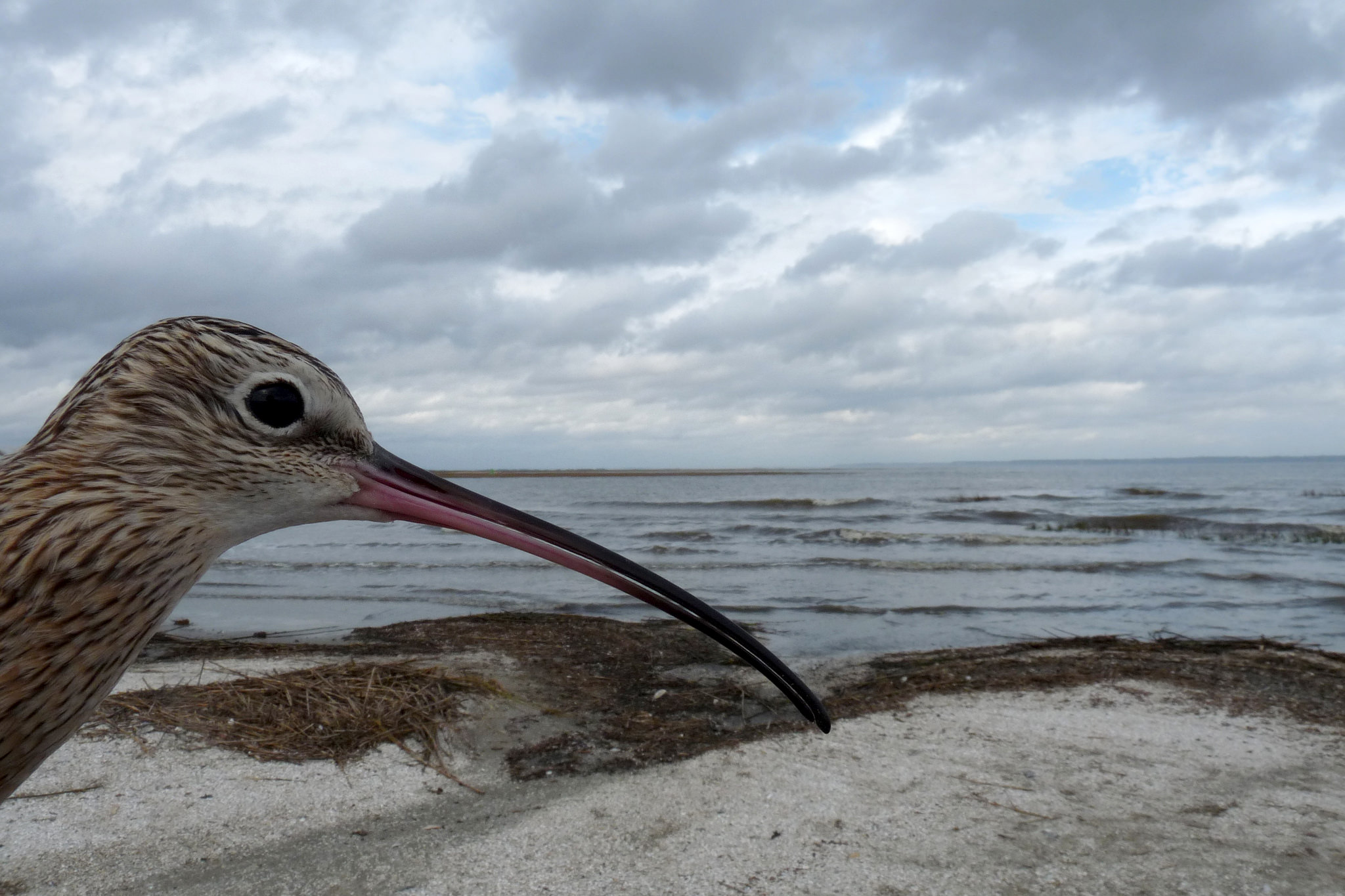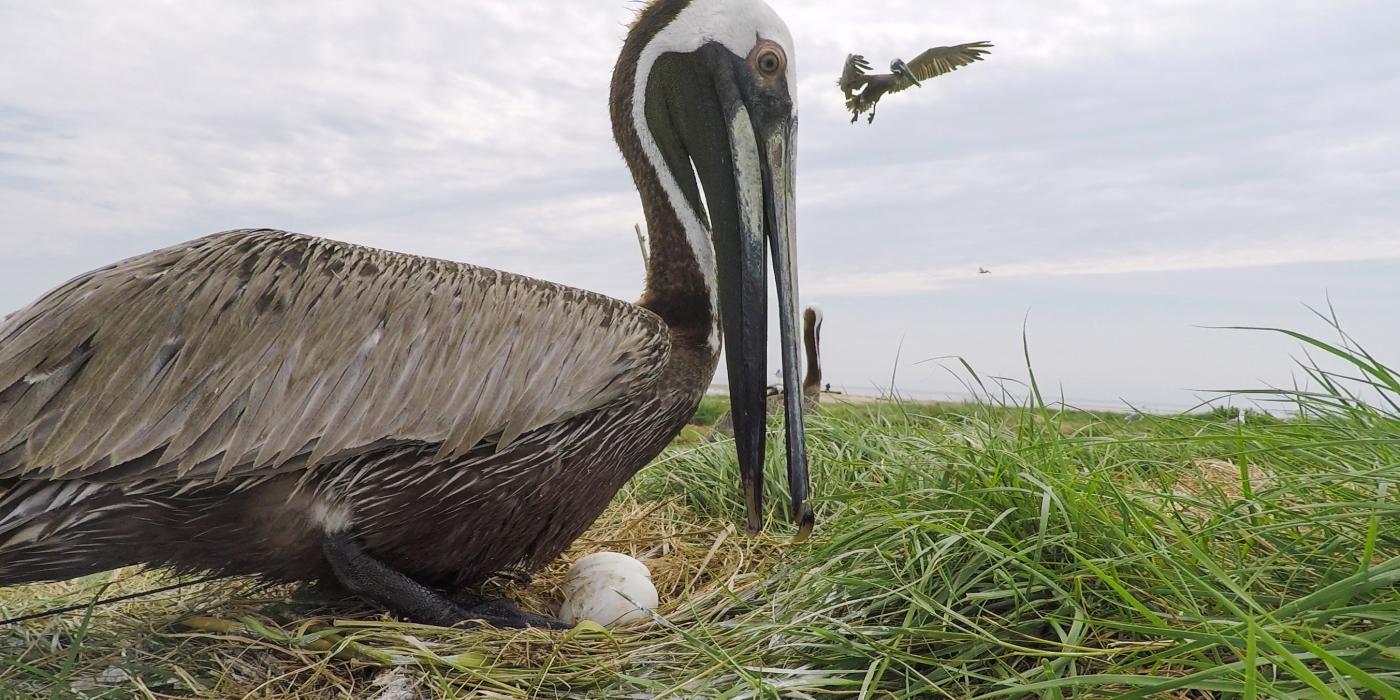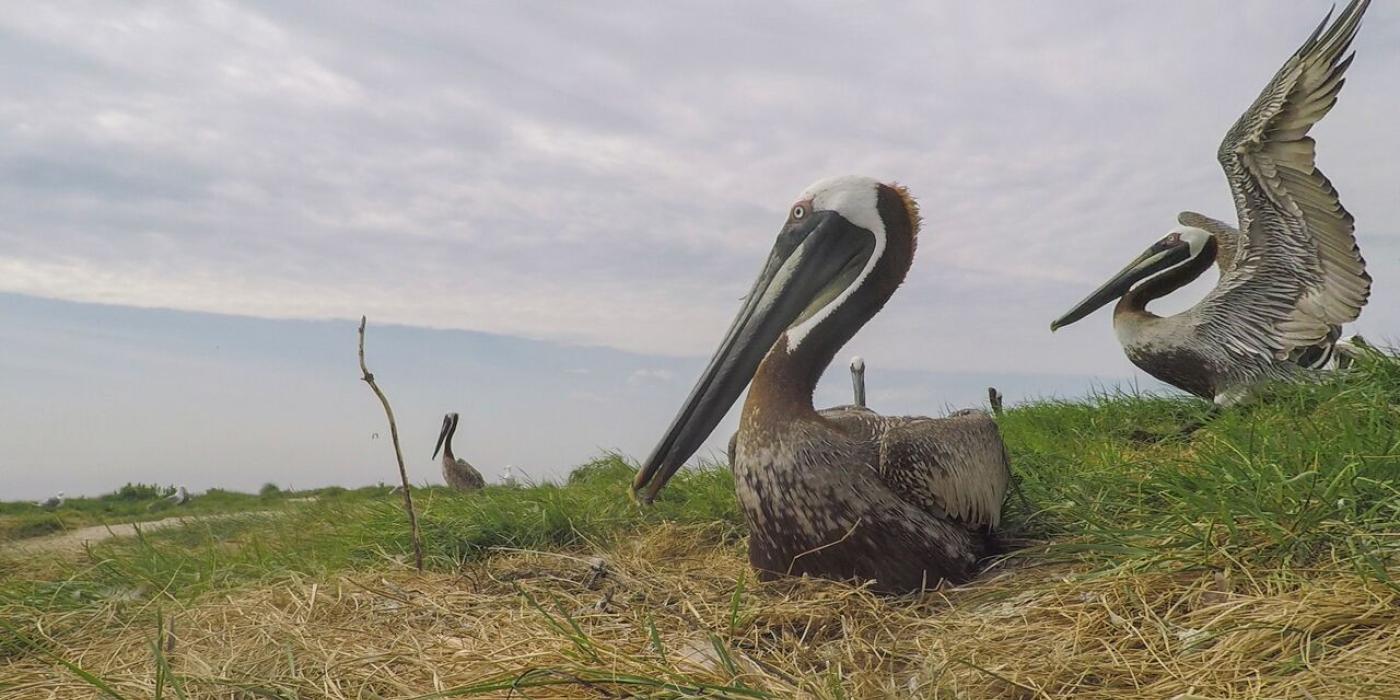Smithsonian-tracked "Ghost Bird" Takes Flight
Long-Billed Curlew To Illuminate Mysterious Migration of Dwindling Wintering Population
Researchers from the Smithsonian Conservation Biology Institute's Migratory Bird Center (SMBC) and partners are celebrating the start of migration this month with a single long-billed curlew they outfitted with a satellite tag in December 2015.
The bird--which was tagged in Georgia and comes from a wintering population of fewer than 100--could help answer basic questions that have so far eluded scientists about this near-extirpated population: Where do they breed? What path do they take to get there from the Atlantic coast? Where do they rest? Where should conservationists focus their efforts?
This is the first time that anyone has tracked a curlew from this vanishing wintering group along the Atlantic Coast, said Autumn-Lynn Harrison, a research ecologist with the SMBC. The birds were once abundant in the marshes of the Southeast, but are now rarely seen, making them like ghosts. Thanks to one tagged bird, we're finally going to get answers and discover this unknown migration.
Tagging the curlew required the collaborative efforts of researchers from SMBC, the Georgia Department of Natural Resources, U.S. Fish and Wildlife Service, South Carolina Department of Natural Resources and Coastal Bend Bays and Estuaries Program. Not only are there few birds for the researchers to find, but the curlews only come up high enough on shore for the researchers to catch during the highest of high tide.
The tagged long-billed curlew began its migration April 5. The satellite tag transmits location data daily. Members of the public can follow the bird's progress on a live tracking map and learn more about the work on SMBC's Migratory Connectivity Project blog.
We have no idea what to expect, but this curlew is an important individual from a species that is especially beloved in the southeastern part of the country,” Harrison said. It has the unique ability to help us understand its population and implement conservation strategies that can make a difference.
Long-billed curlews breed in grasslands of the Great Basin and Great Plains of the United States and Canada, and overwinter in California, the Gulf Coast, the southeastern United States and Mexico. They were once so common in the Southeast that John James Audubon's famous painting of the long-billed curlew was set against the Charleston, S.C. skyline. A combination of hunting and breeding-habitat loss devastated the eastern population of curlews during the 1800s.
Populations of the long-billed curlew elsewhere in the United States are decreasing, stable or even growing, depending on the state. The curlew tracking work is part of the Migratory Connectivity Project, funded in part by the ConocoPhillips Charitable Investment Global Signature Program.




